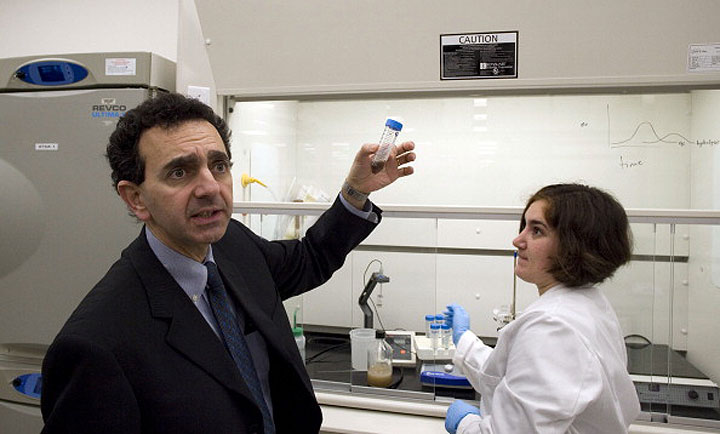TORONTO – Researchers in North Carolina say penises grown in laboratories could “soon be ready for human testing,” offering hope for men who have had traumatic injuries or penile cancer.

In an interview with The Guardian, Dr. Anthony Atala, director of the Institute for Regenerative Medicine at Wake Forest University School of Medicine, said human organ transplantation was “on the horizon” and that his team of scientists are aiming to get approval for human testing within five years.
If successful, experts say the procedure would offer a huge medical advancement for patients with congenital abnormalities, those who have suffered traumatic injuries or have undergone surgery for aggressive cancers.
“Currently, penises are reconstructed using flesh from the thigh or forearm,” said Atala, noting however that since the method uses a patient’s own penis-specific cells “the technology will not be suitable for female-to-male sex reassignment surgery.”
READ MORE: Patients given lab-grown vaginas, nostrils
The university has been experimenting with various ways to create replacement organs for human implantation, from altering animal parts to building them from scratch with a patient’s own cells. In 1999, the team created and transplanted the first human bladder, the first urethra in 2004 and the first vagina in 2005.
How the process works
Reconstructing damaged or diseased penile erectile tissue has traditionally been difficult, according to Atala, because of the tissue’s unique structure and complex function.
“In order to avoid a high risk of immunological rejection after organ transplantation from another individual, penises would be grown using a patient’s own cells,” said Atala. “These cells would be taken from the remainder of the patient’s penis and grown in a lab for four to six weeks.”
Atala said researchers would need a donor penis for the structure, which they would wash in a mild detergent to remove all donor cells. After two weeks, a collagen scaffold of the penis is left, on to which scientists seed the patient’s cells that were grown in the lab.
- Ontario doctors offer solutions to help address shortage of family physicians
- Capital gains changes are ‘really fair,’ Freeland says, as doctors cry foul
- ‘Dangerous message’: Experts slam anti-sunscreen claims circulating online
- As fake Botox cases prompt alert in U.S., Canada says no new issues reported
READ MORE: As more patients get lab-grown body parts, scientists face challenge of making complex organs
“Various surgeries have been attempted, often multi-stage procedures that can involve a silicone penile prosthesis, but natural erectile function is generally not restored,” he said.
The team said that despite the difficulties, they aim to replace or “repair” parts of the penis that help treat erectile dysfunction.
In 2008, the same team developed the first successful engineering of penises for rabbits that reportedly saw the animals “experiencing normal sexual function and produced offspring.”
“The rabbit studies were very encouraging but to get approval for humans we need all the safety and quality assurance data, we need to show that the materials aren’t toxic, and we have to spell out the manufacturing process, step by step,” said Atala to The Guardian.
Back in 2009, Atala described how his team first engineered replacement erectile tissue in the lab on rabbits.
“Scientists first harvested smooth muscle cells and endothelial cells, the same type of cells that line blood vessels, from the animals’ erectile tissue,” said Atala. “These cells were multiplied in the laboratory and by using a two-step process, the cells were injected into a three-dimensional scaffold that provided support while the cells developed.”
Atala said that as early as one month after implanting the scaffold in the animal’s penis, functional testing of the implanted tissue showed that vessel pressure within the erectile tissue was normal, that blood flowed smoothly through it and that as early as one month after implantation, veins drained normally after the animal experienced an erection.
When the animals with the engineered tissue mated with females, Atala said vaginal swabs contained sperm in eight of 12 instances and four of the 12 females were impregnated.
“These results are encouraging as they indicate the possibility of using laboratory-engineered tissue in men who require reconstructive procedures as a lack of erectile tissue currently prevents us from restoring sexual function to these patients.”




Comments